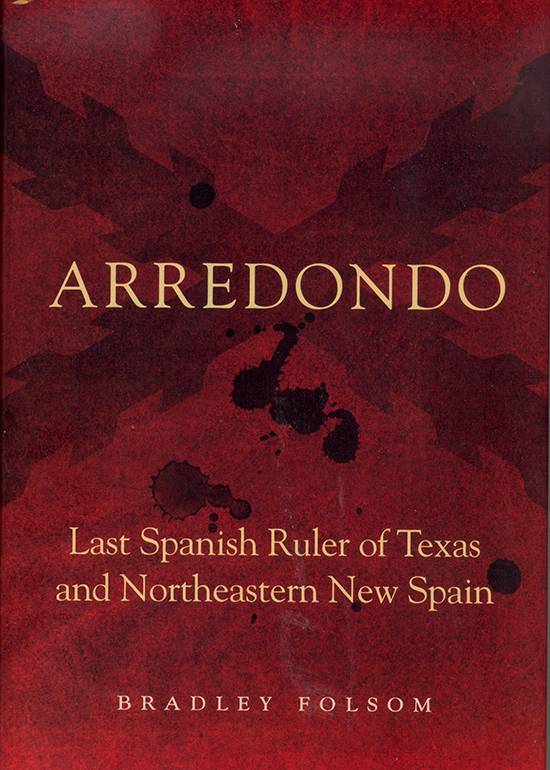End Of An Era

Arredondo: Last Spanish Ruler of Texas and Northeastern New Spain
By Bradley Folsom
Norman: University of Oklahoma Press, 2017.
336 pp. $29.95 cloth.
Reviewed by
James A. Bernsen
General Joaquín de Arredondo is a poorly-understood figure who nonetheless towered in his day at the confluence of Texas, Mexican, and Spanish history. The victor of the Battle of Medina in 1813, he crushed the first Texas rebellion but unleashed the chaos that made the second revolution inevitable. That such an important figure has heretofore been afforded such scant historical attention is a serious omission, one that is greatly corrected by Bradley Folsom’s new biography, Arredondo: Last Spanish Ruler of Texas and Northeastern New Spain.
Folsom has tread fresh ground, and delved exhaustively in American, Mexican and Spanish archives to reveal the man whose actions, when understood, “explain the more popular historical narratives of the United States, Mexico, Texas and Spain.” Indeed, as the example of Austin shows, these histories are not really separate at all, but woven together tightly through a thread that is often obscured by nationalistic interpretations.
Folsom begins with Arredondo’s privileged background as the son of a Spanish general in South America. The lessons he learned provide clues to his future behavior. Like his father, Arredondo is loyal to the monarchy and merciless to its enemies. He too rises in the ranks fighting Spain’s enemies. But Arredondo added a mixture of initiative and a high degree of professional competence, qualities often lacking among his contemporaries.
It was while hunting down rebels in Nuevo Santander when Arredondo first heard of the Gutiérrez-Magee filibuster in Texas, which seized the province on behalf of the Mexican Revolution. Instantly recognizing the danger of American involvement and a potential new highway for arms and propaganda, Arredondo violated orders, scraped together a relief force, requisitioned supplies, and marched northward. His personal leadership and disciplined troops routed the previously undefeated Republican Army of the North in the bloodiest battle in Texas history.
In a chapter aptly titled, “Caligula in Texas,” Folsom describes in detail how Arredondo’s brutal crushing of the rebellion not only extinguished the fire of revolution, but shattered the economy, the region’s development, and nearly the entire lifeblood of Texas. Hundreds were killed in San Antonio, many of them sickeningly dismembered. Even mere sympathizers were executed and their families enslaved. Arredondo soon recognized his catastrophe and pardoned all but a few rebels, but many never returned. Other decisions—like conscripting nearly the entire population while harvests rotted in the fields—caused even more damage. Texas in decline became an inviting target for Comanche raids and even future filibusters.
Arredondo’s brutality, as Folsom shows, was not isolated to Texas. He used executions, torture, even rape as a weapon of control in Nuevo Santander as well. It’s a portrait of a man not so much bloodthirsty, but who nonetheless cannot conceive of a way to win hearts and minds other than by subtracting the less loyal ones from the population pool.
What’s problematic with this view is the widespread prevalence of propaganda during the Mexican Revolution and since, with Arredondo being among the chief targets. Although Folsom does not delve into this aspect in the sources, he does hedge his bets on Arredondo’s legacy. He suggests that the general is probably not more cruel than his contemporaries, who practice what historian Eric Van Young has called “Mexican Stalinism.” Here then, is where the context could help the reader distinguish brutality of fact from the brutality of legend.
Arredondo’s story, in a way, is a master key that allows one to unlock crucial elements of understanding of Texas history: Texas’s misery that led to the dangerous expedient of foreign colonists, Tejano memories and the resulting ambivalence in the 1836 rebellion, even the actions of the young Antonio Lopez de Santa Anna, who fought under Arredondo at Medina and patterned his campaign after his mentor (in comparison, Santa Anna seems downright humane). Joaquín de Arredondo is so singular that one can envision a wide range of alternative histories by merely subtracting him from the equation.
Arredondo is an enlightening book not only for what it teaches us about the man, in his marriage of high competence with a low degree of humanity, but also for what it tells us of the times. In a brutal revolution, his deeds stand out all the more so not because the province he devastated was a populous one, but one precariously perched on the frontier of a fast-expanding foreign neighbor. Arredondo’s war in the North precipitated a collapse in the province that probably made it a lost cause for Mexico even before that successor nation’s tricolor was first raised in Texas in 1821.
James A. Bernsen is an Austin-based public relations consultant and U.S. Navy Reservist. He recently completed his M.A. in History from Texas State University. His thesis was The Origins and Motivations of the Gutiérrez-Magee Filibusters.
